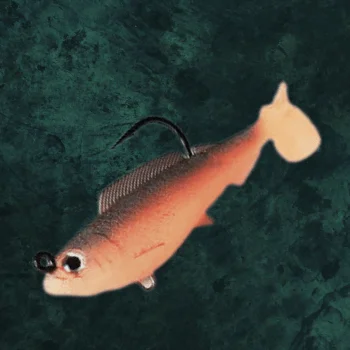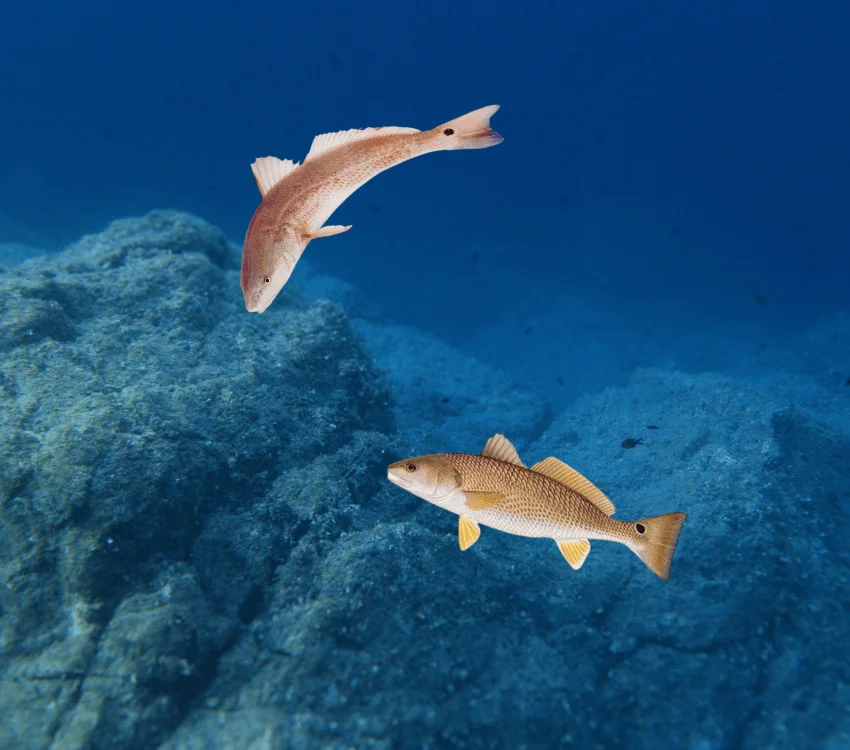
Are you an angler seeking an exhilarating adventure? Look no further than catching redfish, the ultimate challenge that should be at the forefront of your fishing endeavours. Redfish, also called red drum, are highly sought-after game fish renowned for their incredible fighting abilities and delectable flesh.
This guide will discuss the essential knowledge required to catch redfish successfully. From expert advice on selecting the appropriate gear to invaluable tips on choosing the perfect bait, we’ve got you covered.

How to Catch Redfish?
Some valuable Tips should be in mind before going to catch Redfish.
Using Live Bait Effectively: When using live bait, presenting it naturally and enticingly is essential. Hook the bait through its nose or lips to allow it to swim freely and appear more natural. Pay attention to the size of the bait, as it should match the size of the redfish you are targeting.
Mastering the Art of Casting: Casting accuracy and distance is crucial when targeting redfish. Practice your casting technique to improve your accuracy and reach. Try to land your bait or lure near structures or areas where redfish are likely present, such as grassy edges or sandbars.
Using Cut Bait for Redfish: Cut bait, such as mullet or menhaden, can attract redfish. Cut the bait into chunks or strips, ensuring it remains fresh and stays on the hook securely. Use a Carolina or fish-finder rig to present the cut bait near the bottom where redfish are likely to feed.
Staying Stealthy and Quiet: Redfish can be easily spooked, so it’s essential to approach your fishing area quietly and avoid making sudden movements or loud noises. Keep a low profile and be mindful of your surroundings, as any disturbance can alert the fish and make them less likely to bite.
Understanding Redfish Behavior: Redfish are known for their feeding patterns and preferences. They often feed in shallow water, especially during high tides, and are attracted to areas with submerged grass, oyster beds, and marsh edges. Understanding their behaviour and habitat preferences can help you narrow your fishing spots.
Adapting to Changing Conditions: Weather, water clarity, and tidal movements can all influence redfish behaviour. Stay flexible and adapt your fishing strategies accordingly. For example, consider using noisy topwater lures to create vibrations and attract redfish during low-light conditions or when water clarity is poor.
What is Maintaining Proper Fish Handling?
Handling redfish carefully ensures their survival after catch and release. Wet your hands before handling the fish to protect their slime coat and support their body when lifting them. If you’re keeping fish for consumption, follow local size and bag limits regulations.

The Best Setup for Redfish Fishing
- Having the proper fishing setup is essential for successfully targeting redfish. A medium to medium-heavy spinning or baitcasting rod paired with a sturdy reel is popular among anglers. A fishing line with a test strength ranging from 10 to 20 pounds is suitable for redfish.
- Adjust your leader length and strength depending on the fishing conditions and the size of the fish you’re targeting.
- Using a Carolina rig or a popping cork rig for bait fishing can effectively present your bait at the correct depth and entice redfish to strike. When using artificial lures, techniques such as casting and retrieving, jigging, and topwater action can trigger strikes effectively.
The Best Bait for Catching Redfish
When it comes to enticing redfish, the choice of bait can significantly impact your success. Redfish are opportunistic feeders known for their willingness to strike various baits. To increase your chances of a successful catch, it’s crucial to have a versatile bait selection.
Live baits such as shrimp, mullet, and pinfish are popular choices that often yield great results.
Additionally, artificial baits such as soft plastic lures, spoons, and topwater plugs can also effectively trigger the predatory instincts of redfish.
Experimentation with different baits is vital to finding what works best in your fishing area and under specific conditions.

The Best Time to Catch Redfish
Timing is crucial when it comes to redfish fishing. Redfish exhibit different feeding patterns depending on tides, water temperature, and sunlight. Generally, the best time to catch redfish is during the rising and falling tides, commonly called the incoming and outgoing tides.
These periods of tidal movement create a flow of water that stimulates feeding activity, making redfish more active and receptive to biting.
Additionally, early mornings and late evenings are prime times for redfish feeding, as the cooler temperatures and lower light conditions make them more active and aggressive.

What Color Attracts Redfish?
The colour of your bait or lure can significantly impact attracting redfish. While personal preferences may vary, specific colours have proven consistently effective in enticing these fish.
Redfish prefer natural and vibrant colours that resemble their natural prey. Shades of red, brown, and gold often mimic the appearance of shrimp and other small crustaceans, which are staple foods for redfish.
White, chartreuse, and silver combinations can be effective, especially in murky or stained water conditions. Experimenting with different colours and patterns is recommended to find what works best in your fishing area.
An Ideal Location to Catch Redfish
Redfish can be found in various habitats, including marshes, flats, bays, and estuaries. When seeking out redfish, it’s essential to focus on areas with structure and cover, as these provide ideal feeding and sheltering spots for the fish.
Look for marsh edges, oyster bars, sandbars, mangrove shorelines, and grassy flats. Redfish are often found around structures such as docks, bridges, and piers. Pay attention to areas with a mix of currents, providing a steady food supply for the redfish.
Exploring different locations and adapting to the specific conditions of your fishing area will increase your chances of encountering redfish.
Conclusion
Catching redfish can be an exciting and rewarding experience for any angler. Understanding the best bait options, timing your fishing trips, using attractive colours, selecting the proper setup, and targeting suitable locations can significantly increase your chances of a successful redfish catch.
Remember to adapt your techniques based on the specific conditions you encounter and be patient, as fishing is an art that requires persistence and skill. So, equip yourself with the necessary knowledge, enjoy the thrill of the chase, and savour the moments you successfully reel in a beautiful redfish.
FAQs
Q1: Can I catch redfish using artificial lures?
A. Absolutely! Redfish can be successfully targeted using artificial lures such as soft plastic baits, spoons, and topwater plugs. Experiment with different types of lures to find what works best in your fishing area.
Q2: Is it necessary to fish during the tides for redfish?
A. While redfish can be caught any time, fishing during the rising and falling tides can increase your chances of success. Water movement during these periods stimulates feeding activity, making redfish more active and responsive to the bait.
Q3: What is the best time of year to catch redfish?
A. Redfish can be caught year-round, but their behaviour and location may vary depending on the season. Spring and fall are considered excellent seasons for redfish fishing, as they are more active during these transitional periods.
Q4: What are some additional tips for catching redfish?
A. Patience and observation are key when targeting redfish. Pay attention to your fishing area’s water conditions, temperature, and baitfish behaviour. Adapt your techniques accordingly and be persistent in your efforts.
Q5: Are there any fishing regulations for catching redfish?
A. Yes, it’s essential to be aware of the fishing regulations and size limits set by local authorities. Make sure to check the specific guidelines for the region where you plan to fish and adhere to the regulations to protect the fish population and ensure sustainability.


Leave a Reply